The futuristic LiveWire is not the only new model coming from Harley-Davidson in 2020. The Moto Co. is still taking care of their core customers and ZA Bikers went to San Diego, California, to test ride some of their new 2020 models, the Low Rider S 114, the new Road Glide Limited and the Tri Glide CVO 117, just to find out that the big V-twin is as meaningful as ever!

Petrolheads, be happy! The era of electric-only vehicles might be upon us, but until then, motorcycle manufacturers still know how to indulge us with big-capacity engines, good vibrations and motorcycles that maintain tradition whilst being open to modernity. This is the case with the new 2020 model year line-up from Harley-Davidson. Whilst their Touring bikes might look the same as before (new painting scheme aside), and whilst we’ve also seen a Low Rider S and three-wheelers before, there are plenty of reasons to enjoy these new 2020 machines.
Hurrah, the Low Rider S is back!
Remember when, in early 2016, the Moto Co. launched that new Low Rider S 110? That was a kind of bad-ass motorcycle, low, long, dark, powerful, in one word: mean. The aim was to create somehow a reborn version of the first-ever “performance and blacked-out” Harley motorcycle, the 1977 XLCR with a modern appeal, coming from the gold rim colour scheme (like the ones fitted on the Nascar and the F1 cars during the 70’s) contrasting with the deep black paint and finishes, as well as the rather aggressive K+N type “breather” air filter.
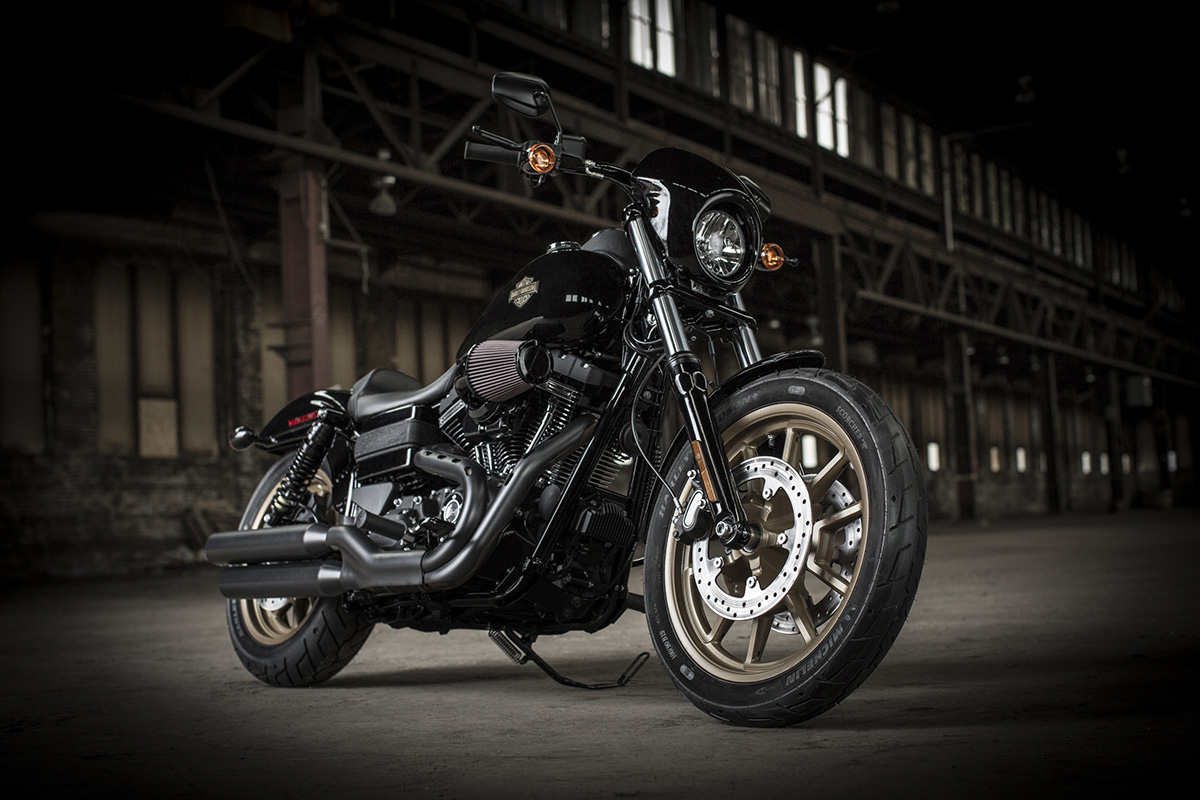
The Low Rider S 110 had the most powerful unit of the time: the 1801 cc mill produced 94 hp and 156 Nm of torque. Harley also fitted a pair of exclusive rear shocks, with preload settings and nitrogen-emulsion foam.
I can remember being invited to the world launch, which was in Provence (France), and I can recall having a bloody good time riding what I then considered being the best Harley-Davidson of all time. The Low Rider S 110 was powerful, fun, great to ride with first-class handling and proper rear suspension (not a usual complement for Harley-Davidson). On top of that, the engine characteristics were just so addictive: these two big pistons were delivering it all with a unique mix of strength and smoothness, great sound and a thrilling riding experience.
However, the whole Dyna range passed away when Harley-Davidson redesigned its offering two years ago, with the launch of a new comprehensive Softail family. The Low Rider S had been alive only for two years, but the machine then became a bit of an icon, dropped from the range, with some second-hand models selling for more than their initial value.

It was a wise decision for Harley-Davidson to think about a revamp of that Low Rider, and inside the Moto Co’s secret R&D doors, the name of the project was simply “Anarchy”.
In proper Harley-Davidson tradition, everything changed but they tried hard for the bike to be pretty much the same. Same look, same performances, same spirit.
The new Low Rider S is no longer a 110ci but a 114ci. It’s no more a 2-valve engine, but a proud member of the Milwaukee-Eight family. Despite that evolution (and thanks to the emissions rules), the 1868 cc engine figures are pretty much the same as before: 93 hp and 155 Nm, which is not a big issue as the weight is also very similar (293 kg dry for the 110, 295 for the 114).
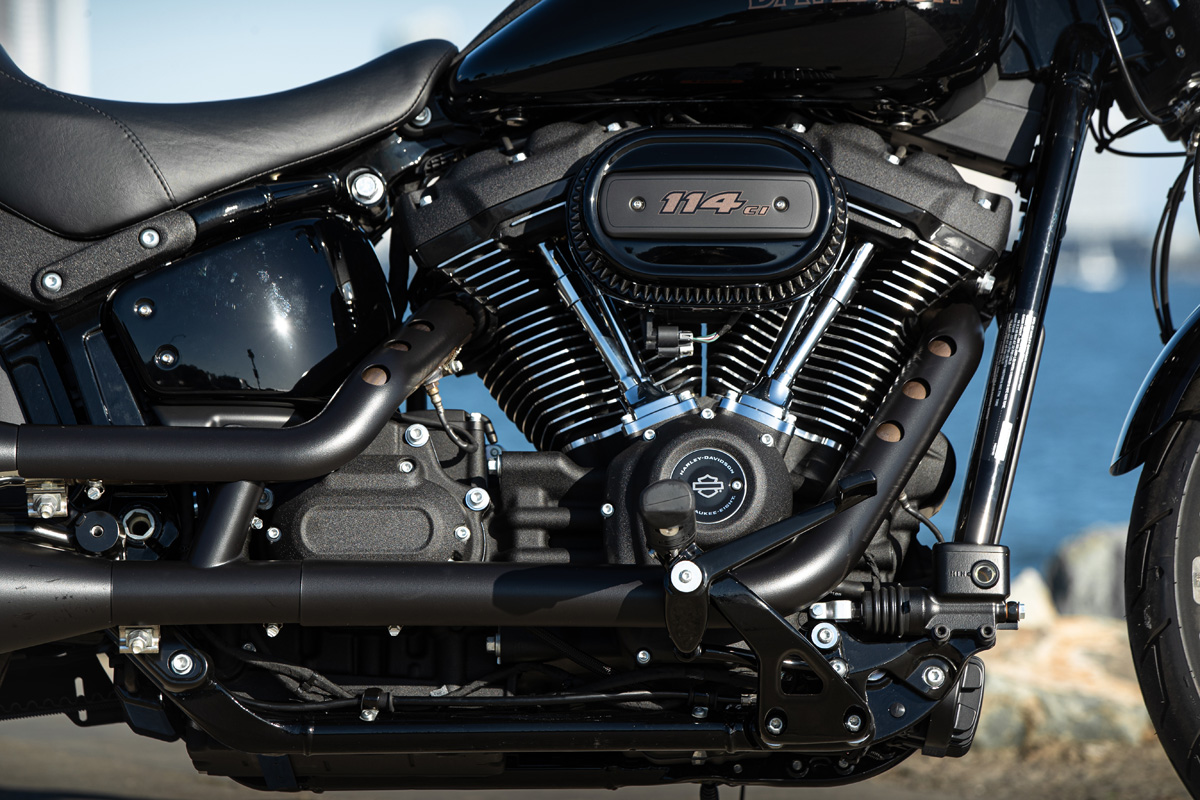
In terms of design, the Low Rider S spirit has survived the move from the Dyna to the Softail range. The two rear shocks have disappeared (the new mono-shock unit is now located under the seat), but the Low Rider S 114 now features a brand new 43 mm upside-down Showa front fork, whilst the low seat (690 mm instead of 685), the compact and aggressive design and the small headlight fairing has nearly the same charisma as before.
Once on-board, the riding position is a bit singular, the seating position is low and your legs are in a rather high position. You quickly get used to it, whilst the extraordinary low-speed balance of the machine makes urban riding a real pleasure.

Hence, with 155 Nm and 93 hp, the open road has some charms too, and this is at a moderate speed, with occasional pull-offs’ and in not-too-slow-not-too-fast corners, that’s when the Low Rider S 114 delivers its best. I’m thinking about the roads near Clarens, or also the backroads from Durban to Himeville.

To be honest, I was slightly more addicted to the “old” 110 two-valve charm than the 114 perfection, but as the new one offers nearly three degrees more of ground clearance (33,1°, compared to the 29,5 right and the 30,5 left of the former model), I’ll take it too!
The Touring range getting safer
As before, the Touring range is composed of Street Glide, Road Glide and Limited, to mention the bikes with fairings, alongside the Road King. Whilst they look similar to before, the changes are much more subtle than you would imagine.
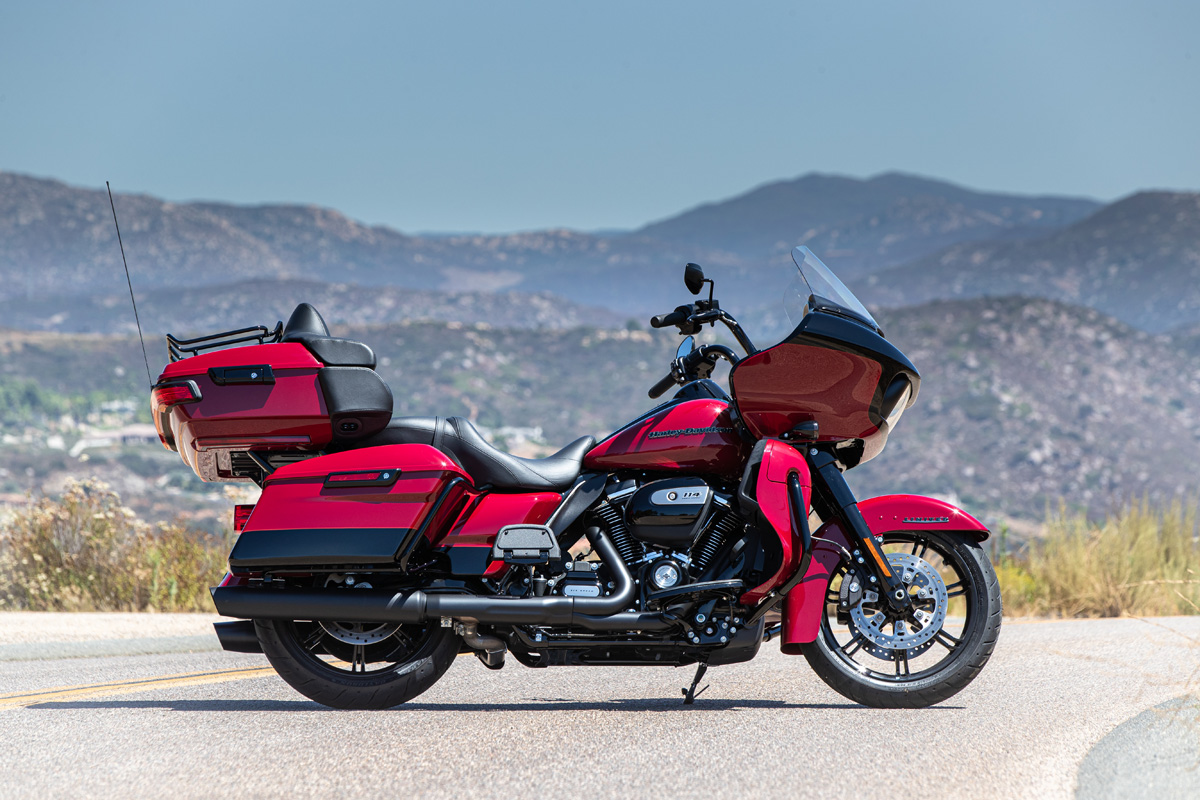
The first one comes from HD-Connect. This is not a motorcycle: it’s a smartphone App. HD-Connect gives you the possibility to know every stat of your riding (road, speed and so on), to know the bike status (fuel range – and battery level on the LiveWire), as well as safety issues, like the bike being bumped, or worse, being moved. You can check all that from your smartphone, and also deal with and organize service issues.
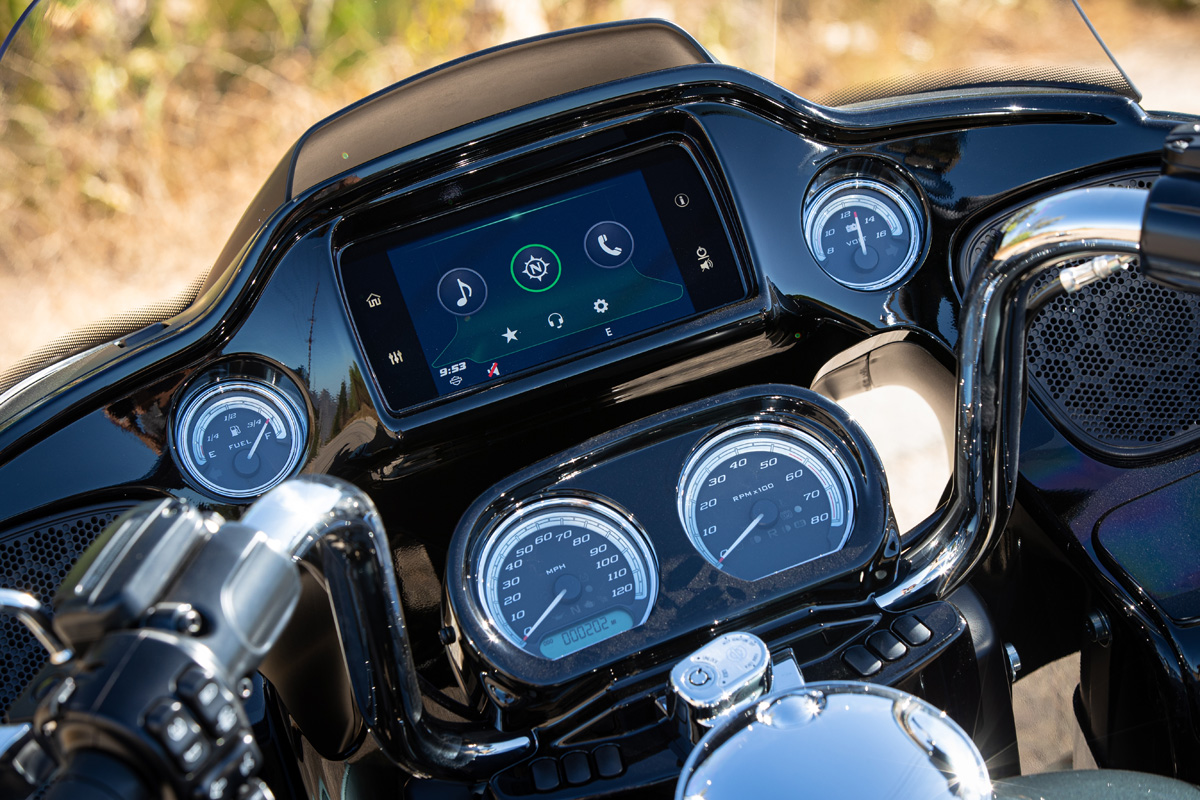
On top of that is the RDRS, for Reflex Defensive Rider System, which is an innovative feature on an American tourer. The RDRS relies on a Bosch 6-axles IMU: there is an ABS dealing with a cornering function; there is a traction control with 3 levels (on, off, rain – which features a small blue cloud on the speedo) and also a hill-start assist.
To be honest, riding in sunny California did not give me the opportunity of feeling the benefit of traction control. But I surely know by experience it can be your guardian angel one day when the road is damp and the weather is horrible and your tyres are used and your bike a bit overloaded coming back from a long trip. Then, the traction control can help you to keep on your wheels on that long, heavy and expensive motorcycle.
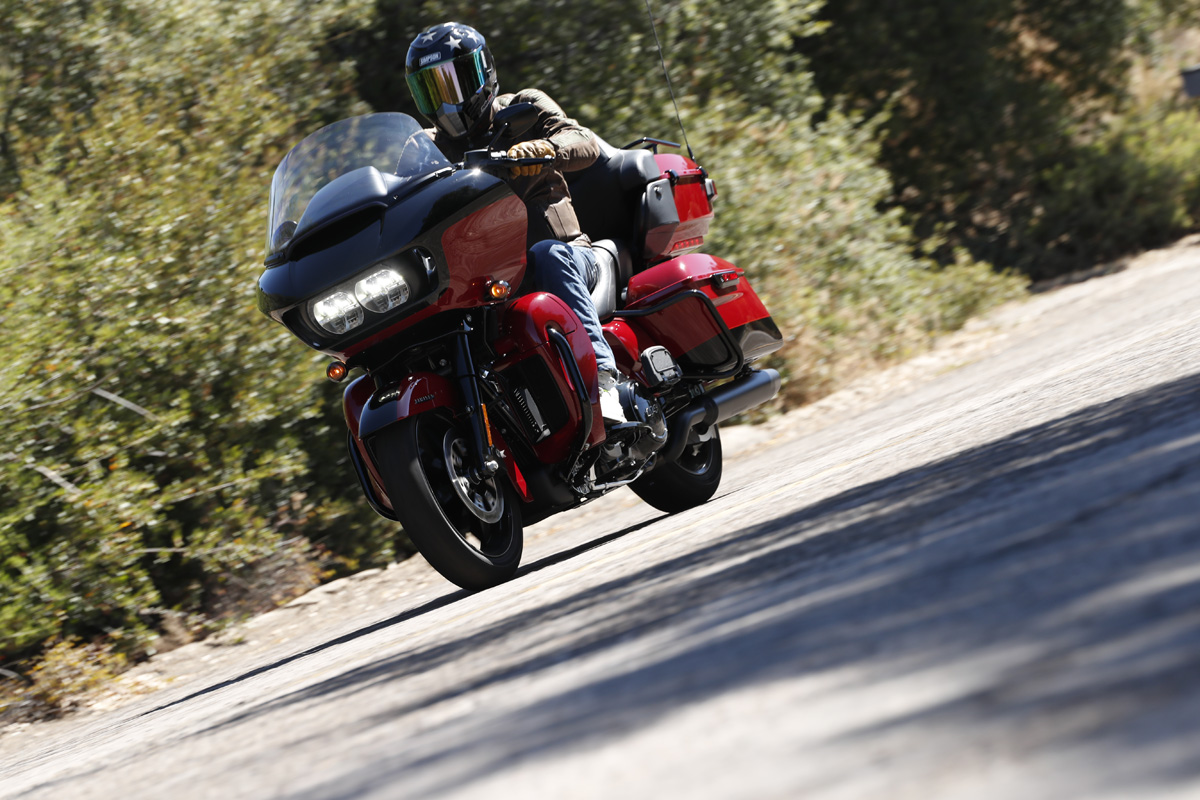
For test purposes, I was trashing the throttle exiting some slow corners in the Cuyacama Lake National Park, one hour away from San Diego, nothing happened on the hot and sticky tarmac. But for sure, one day, it can help you.

Alongside the new range, is the new 2020 Road Glide, and I’ve always had a thing for Road Glides. The Road Glide now has a new spec: Limited. Not less than 12 colour schemes are available, half of them with a “blacked-out” scheme, where the engine, exhaust, and some other parts are all black.

With the 38 cm tall windshield and the frame-mounted fairing, the Road King delivers the best mix of wind protection and front-end lightness and feeling. No doubt why it’s still the favourite with Harley riders who are the biggest mile-eaters.
An exhilarating CVO!
The CVO (Custom Operation Vehicles) brand was born 25 years ago, to deliver limited quantities of the Harley-Davidson performance, fit-and-finish and state-of-the-art accessories.
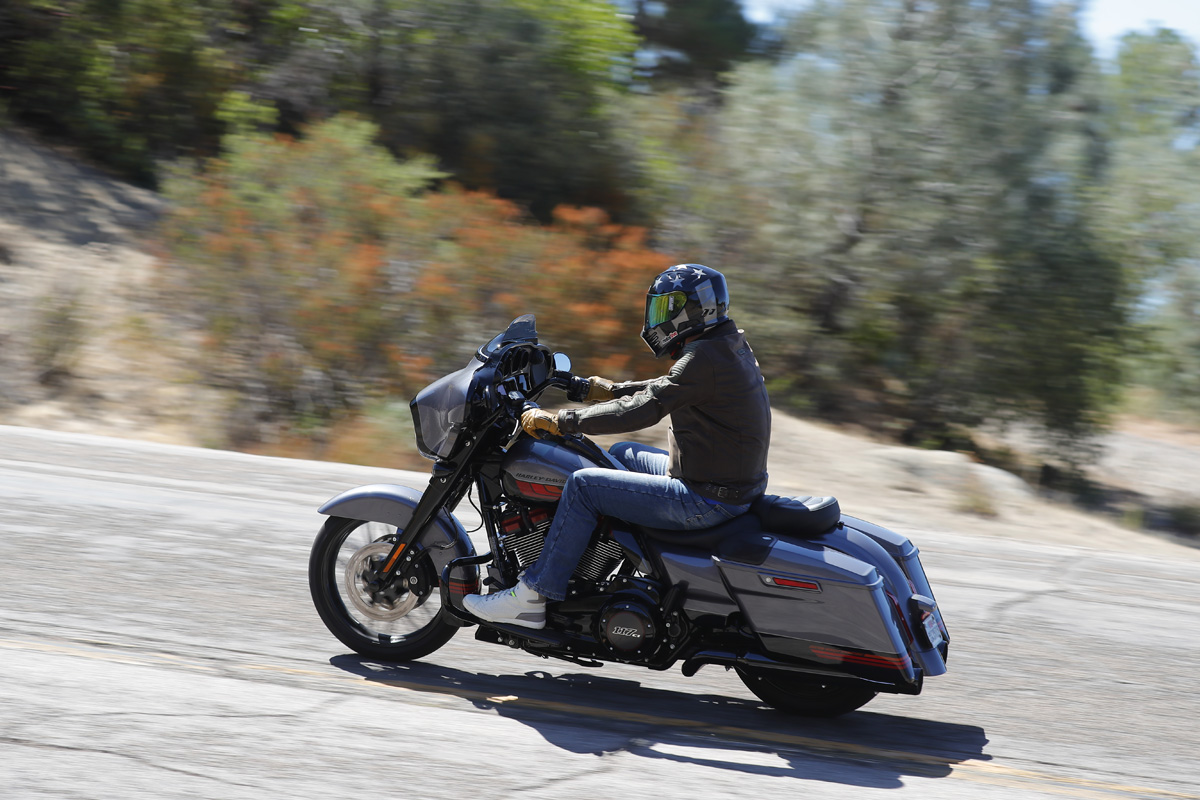
Here, the 2020 news comes from the CVO Tri Glide: for the first time, a CVO machine has three wheels. The 117 (1923 cc) engine delivers a mighty 106 hp and 171 Nm of torque, which, relating to the 563 kilos dry in car terms would make for an 1100 kg car with 212 hp and 340 Nm. Anyone would call that a sports car!

The Tri Glide CVO has some top of the range features, such as the Daymaker LED lamps, an RDRS with some special three-wheels settings. And look at it: from the special painting to the brand new 19’’ front wheel and the pair of 18’’ “Tomahawk” rear wheels, the Tri Glide CVO has some serious presence on the road.
How is it to ride? Somehow, easy. Just put your foot on the panels, release the clutch and there you go. You’d be surprised, somehow, to see that the Tri Glide CVO, thanks to the rear tire grip and the 171 Nm of torque, can wheelie easily in first and second gear. Then, riding it is a bit like a quad-bike. Your body moves to get into the corner and, for the pillion, it’s not as comfortable as it is supposed to be. But the 117 engine will make your day: with a shorter gear ratio than the Touring bikes, it’s strong, willing, expressive.

As they say in the USA: nothing replaces displacement! The 2020 MY Harley-Davidson range has all it needs to tickle your fancy…




